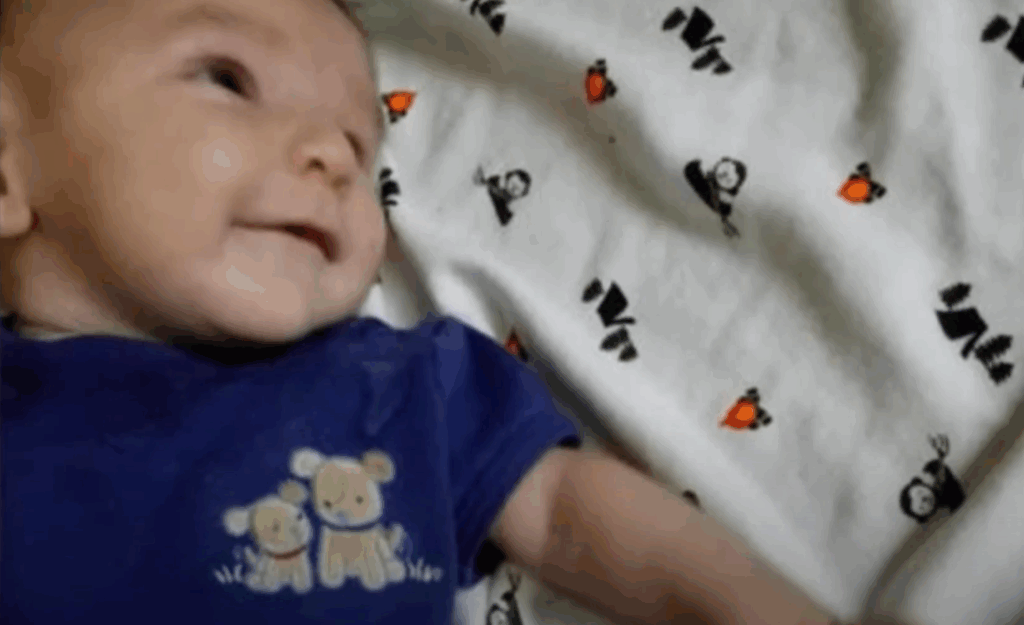In one of the most shocking child neglect cases in recent U.S. history, four-month-old Sterling Cohen was found dead in 2017 after being left unattended on a baby swing for nearly two weeks. The infant, abandoned in a dark, sweltering room, succumbed to dehydration, malnutrition, and severe infection.
From a Troubled Family to an Unimaginable Crime
Sterling was born on May 1, 2017, the second child of Cheyenne Harris (17) and Zachary Cohen (25), who lived in the small town of Alta Vista, Iowa.
From the very beginning, his life was marked by tragedy. Tests revealed that he was born with methamphetamine in his system, a direct result of his mother’s drug use during pregnancy. Despite this red flag, Sterling was discharged from the hospital and allowed to return home with his parents.
Zachary came from a strict Mennonite background but had long abandoned those values, turning instead to alcohol and methamphetamine abuse. Cheyenne, still a teenager, soon followed the same path of addiction. Together, they created a toxic and unstable household.
What made the case even more haunting was the stark contrast in how the couple treated their children. Their firstborn, a little girl named Nala, was well-fed, groomed, and cared for. Sterling, however, was all but invisible – a child whose very existence was denied within the family home.
A Baby Hidden in Darkness
Witness testimony revealed that Sterling was rarely, if ever, held or nurtured. He was not rocked to sleep, nor was his diaper regularly changed. Instead, his parents placed him in a baby swing pushed against the wall of a dark room, isolated from the rest of the family.
Friends who visited the home noticed the care and attention given to Nala, but none of them ever saw Sterling. It was as if he had been hidden away, forgotten, and erased from daily life.

The Shocking Discovery
On August 30, 2017, Cheyenne reportedly broke down in tears and told Zachary, “Sterling’s gone.” When police and emergency responders arrived, they were horrified by what they found.
- The room was stiflingly hot, pitch-dark, and reeked of urine and decay.
- Sterling’s small body lay motionless in the swing, cold, discolored, and stiff.
- His diaper was saturated and soiled, his clothing fused with layers of waste.
- To their horror, maggots crawled across his skin and the swing itself.
The autopsy revealed that Sterling had likely been left in this state for 10–14 days, deprived of food, water, and even the most basic hygiene. He ultimately died from a combination of E. coli infection, starvation, and dehydration.

Trial and Sentencing
Both parents were charged with first-degree murder and child endangerment resulting in death.
In court, the couple attempted to shift blame:
- Zachary claimed he trusted Cheyenne to look after the baby.
- Cheyenne argued she suffered from postpartum depression and was consumed by meth addiction.
But prosecutors pointed to the clear evidence of intentional neglect. The fact that Nala had been healthy and well-cared for while Sterling was left to die proved that this was not an accident or mere oversight – it was a conscious choice.
The jury convicted both parents. They were sentenced to life in prison without the possibility of parole.
A Community in Mourning
The case sparked outrage across Iowa and the United States. Many questioned why child protective services had not intervened, especially since Sterling was known to have meth in his system at birth.
Judge Richard Drew, in delivering his remarks, emphasized the moral weight of the case:
“Every child deserves love, care, and the basic necessities of life. Sterling never had that chance. His short existence was marked by suffering, and the responsibility lies squarely with his parents.”
The tragedy became a chilling reminder of the consequences of parental neglect, the devastating impact of drug addiction, and the importance of community vigilance in protecting vulnerable children.
Conclusion
The death of baby Sterling Cohen stands as one of Iowa’s most heartbreaking cases of child abuse and neglect. A little boy, only four months old, spent his final days in solitude and silence, never held in comfort, never nurtured, and ultimately denied the very basics of survival.
Sterling’s story continues to haunt those who learned of it, serving as both a cautionary tale and a call to action: society must do more to ensure that no child is ever left invisible, forgotten, and unloved.


